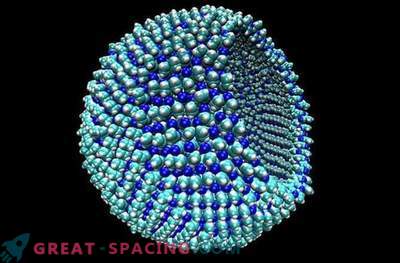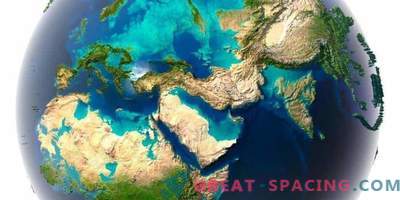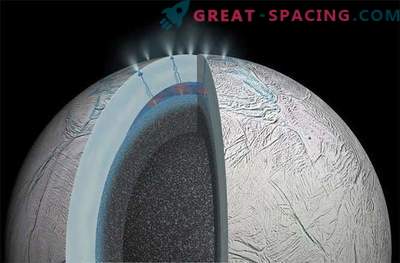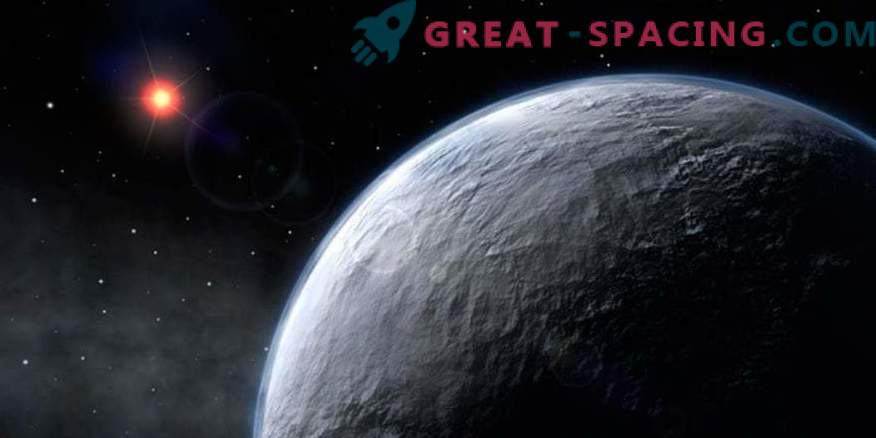
We used to think of Earth as a water world. Our planet is 70% covered by oceans, so that from space it looks like a blue ball with white streaks of clouds and small pieces of land. But in fact, the depth of our oceans is negligible compared to the radius of the Earth. By mass, water is only twenty-five thousandths of a percent of the mass of the planet. Would modern astronomers be able to determine if there is water on Earth if they looked at the solar system from somewhere with Alpha Centauri?
Now scientists make conclusions about the masses of exoplanets, observing how strongly the planet “swings” its star by gravitational interaction. And the conclusion about the size of the exoplanet is made from how strongly it blocks the light, passing between the star and the telescope. Then the mass is divided by the volume and an approximate density of the exoplanet is obtained, from which it is possible to get an idea of the distribution of gases, liquids and solids in its mass. Such methods, unfortunately, do not make it possible to fix the volume of water that is on Earth! That is, on our planet, the water is too low so that when we look at the object from another star, we can relate the Earth to the world, where you can go for a swim or get wet in the rain ...
Modern science allows to conclude that there is water on the exoplanet only if the water is at least 10% of its mass. And 10% is four hundred times more than it is on Earth now! This is a giant ocean that would completely cover the entire earth's surface. It would seem that the more water - the better for the emergence of life. No wonder the motto of astronomers who have devoted themselves to the search for extraterrestrial life, has always been the phrase "Look for water!". Life, known to us, is impossible without water, since it is precisely it that is the solvent of substances that fill living cells. Water is the chemical base of the energy processes that we call life. Its uniqueness in this case lies in the fact that it remains liquid in a very wide range of temperatures. Therefore, the question of whether there is a chance for the emergence of life in a world where there is much more water than ours, at first glance seems paradoxical.
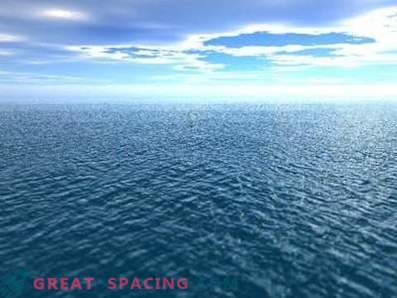
But let's try to figure it out. Scientists from the University of Arizona conducted a virtual experiment by building a model of chemical processes on an exoplanet identical to Earth. The only difference from our world was an excess of water: scientists have increased the volume of the oceans more than 5 times. In this case, there was no land on the surface of the planet, and the process of weathering and leaching of rocks completely disappeared. This led to the fact that the water content of phosphorus dropped critically - an element indispensable for earthly life. And without the required phosphorus content, neither the Adenosine Triphosphoric Acid (ATP) molecule responsible for the energy of life, nor the RNA and DNA molecules can exist. A world completely covered by the ocean may not be completely lifeless, but life there will surely be very different from sea life. Most likely, life in such conditions would be much less dense, and it would be much more difficult to find it from another star system. Huge pressure of water on the bottom can create superdense forms of ice, such as ice-6 and ice-7 (this is a kind of water ice). Such an ice shell would lead to the isolation of water from hard rocks, which would make the process of chemical evolution even more problematic. Therefore, on the question of the emergence and prosperity of life, “more water” does not mean “better.” Perhaps such planets are exotic and the problems described are not statistically significant for the origin of life? It turns out that scientists are inclined to believe that there may even be more similar water worlds in the Universe than stony planets like our Earth or Mars.
Stone and water are approximately equally distributed in the solar system; this is the main part of the asteroid belt (between Mars and Jupiter) and the Kuiper belt (beyond Neptune’s orbit). In the most well-known - after the Solar - Trappist-1 system, all 7 exoplanets most likely have significantly more water than the Earth. According to astrophysicists, objects closer to the star consist of about 10% ice and liquid water. External exoplanets Trappist-1 - from ice about 50%. It seems that all these worlds are completely covered with water and ice and with a high degree of probability are sterile.
Unfortunately, it turns out that all exoplanets, on which modern scientists detect water, are likely to be lifeless. But if the Hubble telescope does not allow to detect worlds similar to Earth in terms of volumes of water, perhaps this can be done by James Webb's telescope? This miracle of technology will be launched into orbit in 2020 and will be able to analyze the atmosphere of exoplanet giants. However, most likely he will not give an answer to this question. The technique that would allow water to be found on the Earth’s twin from interstellar distance is only being developed and will appear in orbit by the middle of the 21st century.

But perhaps we should not look for life in aquatic worlds so far? After all, literally at our side, in some half a billion kilometers, there is a huge ocean of salt water. We are talking about Europe - the satellite of Jupiter, under the ice of which lies a 100-kilometer water column. The supply of water in Europe is twice or even three times the earth's ocean. This discovery, made by the Galileo apparatus, was not the only discovery of water by the giant planets of the solar system. In 2005 Cassini's probe recorded geysers hitting from under the ice of Saturn’s satellite Enceladus. And after 10 years this apparatus even flew through such a jet, taking samples and finding there besides water, nitrogen, carbon dioxide, hydrogen, methane and ammonia. Such a composition of emissions suggests that in the depths of Enceladus hydrothermal activity is boiling with might and main, water, under the influence of high temperature, interacts with solid rocks and decomposes into hydrogen and oxygen. Hydrogen for small bodies is a marker of chemical activity — it is the lightest element of the periodic table and without constant formation quickly disappears into space without a trace. It means that somewhere inside Enceladus there is a constant process of hydrogen formation, therefore, there is an energy of the type that allows prehistoric microorganisms to exist on Earth.
Archaea - single-celled organisms that do not have a nucleus, use as organic energy, ammonia, and hydrogen as energy sources. Some archaea emit methane, which for scientists is one of the possible markers of life on the planets. Such microorganisms, methanogens, exist on Earth in the absence of sunlight, under extreme conditions that are no better than cosmic ones. If methanogens on Earth are embedded in the ecosystem of the strangest creatures of our Nature - tubular worms, why not coexist with alien organisms of Enceladus or Europe? On our own planet there are amazing places where life exists at a temperature of 500 degrees and at a pressure of 200 atmospheres. Moreover, the ecosystems of “black smokers” exist without sunlight - the main source of energy for life on our planet. Such conditions are similar to those that may exist under the ice of the moons of Saturn and Jupiter. Nevertheless, scientists are very cautious about the possibility of the existence of complex life forms in these aquatic worlds. Even search enthusiast for extraterrestrial life, Seth Shostak, director of the SETI research center, says that for multicellular life forms, energy under the ices of Europe and Enceladus is probably not enough. Life could have been developing there for more than 4 billion years, but it is unlikely that we will ever meet there a tuna or other creature whose life requires as much food as fish from planet Earth. But even the discovery of bacteria would be a breakthrough for earthly science. But it seems that astronomy alone is not enough to answer the question of whether there are bacteria on the satellites of the giant planets. The only way out is to fly to Jupiter and Saturn and understand on the spot. It seems that the unequivocal answer to the question of the existence of life on other planets and satellites of the solar system, and on exo-planets, we will receive only by the middle of the 21st century.
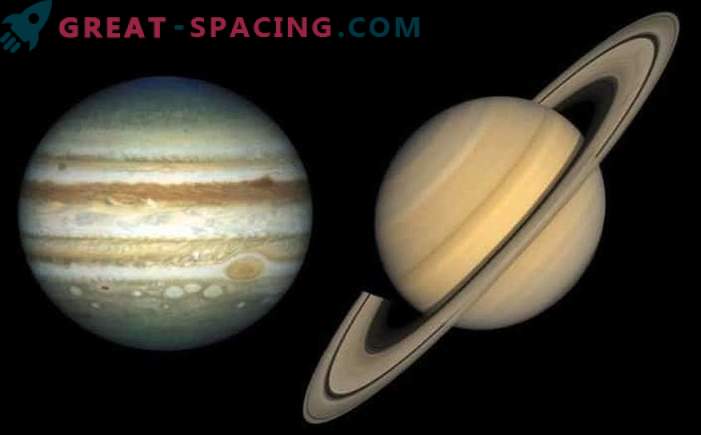
So what can we say for sure today? The discovery of huge amounts of water in the solar system outside the Earth has significantly changed the paradigm of thinking of exo-biologists. Before the missions to Jupiter and Saturn, scientists assumed that all satellites would be similar to the Moon and Phobos - rocks, dust, and dry desert. Liquid water in volumes exceeding the Earth’s ocean is a gift for enthusiasts looking for extraterrestrial life. If we have so much water at our side, then it should be no less in other star systems. Thanks to the discoveries that made the Hubble telescope, we know that a star without planets is a rare phenomenon. Almost everyone has their own planetary system. The first element in the universe is hydrogen, the third most common is oxygen. It is logical that their union, water, should be very widely represented in any galaxy. Indeed, astronomers are now finding water not only on planets, but also in interstellar clouds and protoplanetary disks. Water in space abound. Therefore, when we look at the night sky, it can be argued that almost every star has its own water world.





